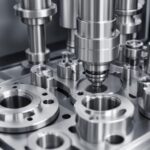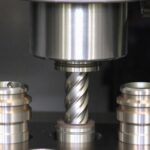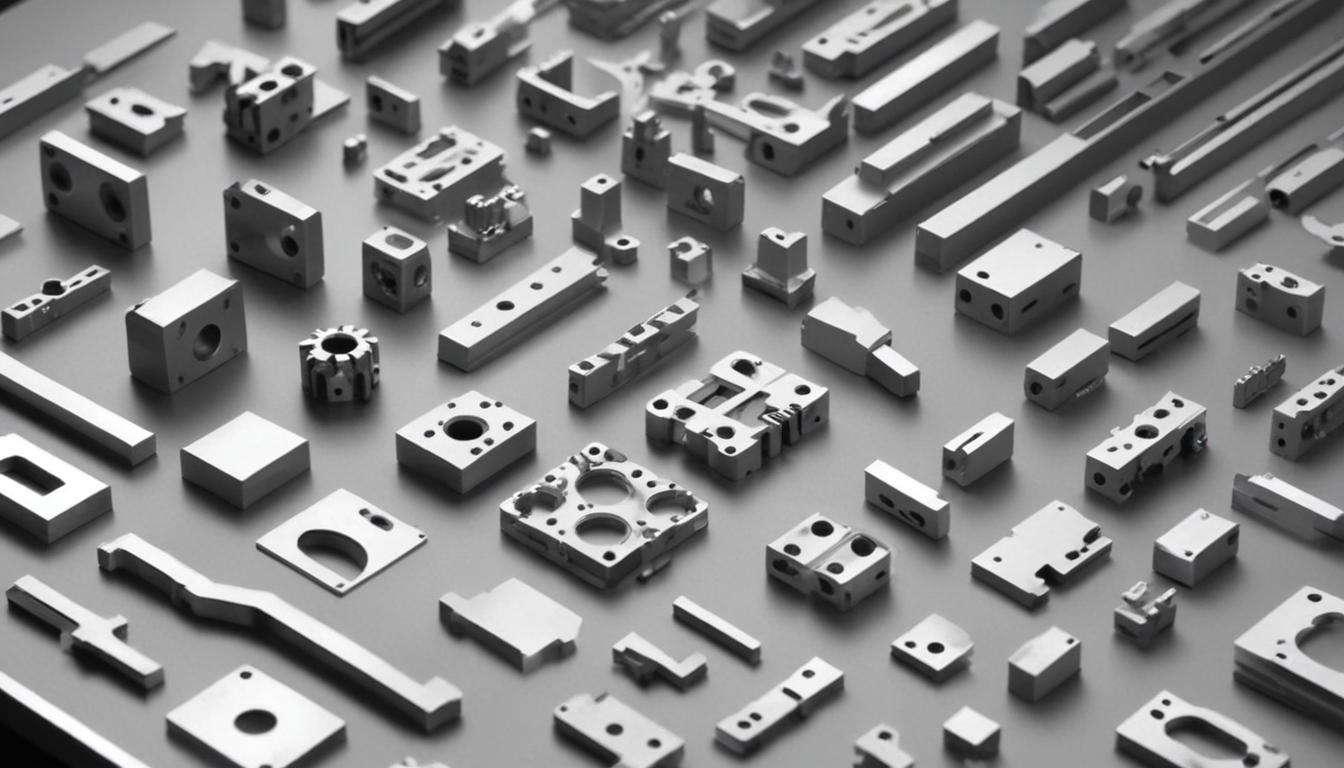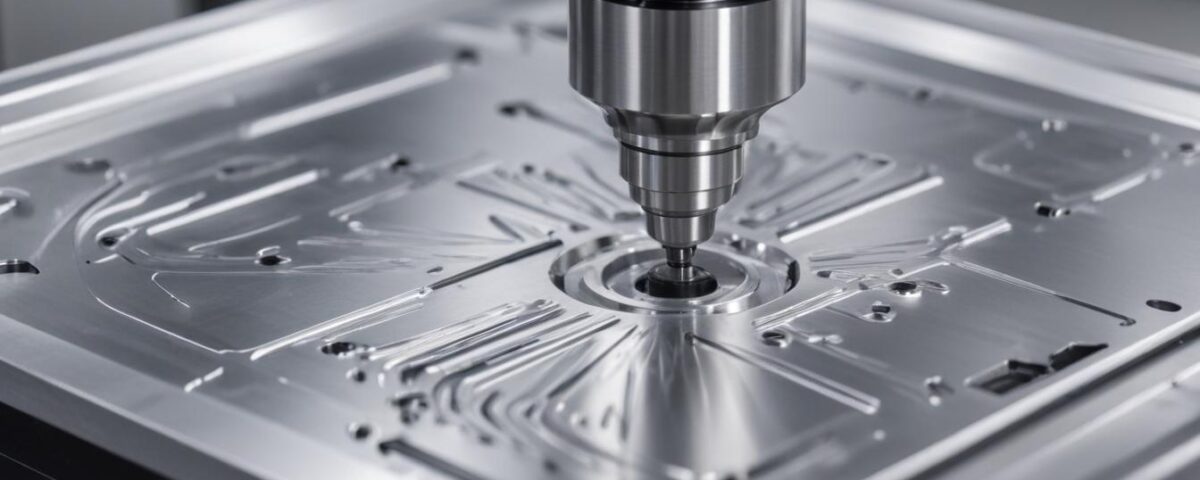
The Future of the CNC Machining Industry: Innovations and Opportunities
28 October 2024
Methods for Addressing Burrs After Machining Processes
30 October 2024CNC prototyping, or Computer Numerical Control prototyping, involves creating precise, high-quality parts by guiding automated machines through pre-set digital instructions. This method stands out for its accuracy, allowing for complex, reliable, and durable components across industries like aerospace, automotive, and medical. Precision is critical, as even minute errors can affect a product's performance and safety. This blog explores the CNC prototyping process in metal manufacturing, highlighting its advantages, challenges, and how it’s transforming modern production standards.
What is CNC Prototyping?
CNC, or Computer Numerical Control, refers to the use of automated machine tools controlled by pre-programmed software to execute highly precise manufacturing tasks. Unlike traditional methods, which often require manual adjustments and limit the complexity of parts produced, CNC prototyping automates these processes, enhancing accuracy and allowing for the rapid production of complex geometries with tight tolerances. The CNC prototyping process begins with designing a digital model using CAD (Computer-Aided Design) software, which is then converted into CAM (Computer-Aided Manufacturing) instructions for the CNC machine. The machine precisely follows these instructions to cut, shape, and refine materials, resulting in a high-quality prototype that meets specific design requirements. This technology revolutionizes manufacturing by making it possible to quickly and accurately create complex metal parts ideal for testing and final production.
Benefits of Metal CNC Prototyping
High Precision and Accuracy
One of the standout advantages of metal CNC prototyping is its high level of precision. CNC machines are programmed to execute exact movements, allowing for tolerances as tight as a few microns. This precision ensures that parts meet strict design specifications, resulting in higher quality and durability. Accurate prototyping also speeds up the transition from concept to final product, reducing the risk of costly adjustments in later stages.
Complex Geometries and Designs
CNC prototyping allows for intricate designs and complex geometries that would be nearly impossible with manual methods. The computer-controlled machines can handle multiple axes and angles, enabling designers to push creative and functional boundaries. This capability is crucial for industries like aerospace and medical devices, where detailed parts are often required to fit within tight spatial constraints or perform specialized tasks.
Reduction in Material Waste
CNC machines follow optimized toolpaths, removing material only where necessary, which leads to a significant reduction in material waste. This waste-minimizing approach not only makes CNC prototyping an environmentally conscious choice but also reduces material costs, especially when using expensive metals like titanium or stainless steel. The reduced waste factor is particularly advantageous for industries aiming to improve sustainability without sacrificing quality.
Speed and Efficiency in Production
Automated CNC machines work faster than manual machining methods, efficiently producing parts with minimal human intervention. This speed is valuable in prototyping, where timely iterations are often essential for testing and development. Rapid production allows designers and engineers to refine prototypes quickly, ensuring that they move forward with optimized designs.
Cost-Effectiveness for Small Batches
Unlike traditional manufacturing, which can be expensive for small runs due to setup costs, CNC prototyping is highly cost-effective for low-volume production. Once the machine setup and programming are complete, additional units can be produced with minimal additional costs, making CNC ideal for small batch production or custom projects. This flexibility helps companies test products economically before committing to large-scale manufacturing.
Key Technologies in Metal CNC Prototyping

Overview of Various CNC Machines
Metal CNC prototyping employs different types of machines, each suited to specific tasks:
- Milling Machines: CNC milling machines use rotating multi-point cutting tools to remove material, creating parts with complex shapes and smooth finishes. Ideal for precision parts, these machines can work on multiple axes (from 3-axis to 5-axis configurations), which allows for creating intricate geometries and achieving tight tolerances.
- Turning Machines (Lathes): CNC lathes rotate the workpiece against a single-point cutting tool, making them ideal for producing cylindrical or round parts. CNC turning is used in creating components like shafts, bushings, and other cylindrical items, and it enables high-speed production with high accuracy.
- Electrical Discharge Machines (EDM): EDM, or electrical discharge machining, is a non-contact technique that uses electric sparks to erode material from the workpiece. This process is effective for hard metals and intricate parts with fine details, such as molds and die-making, where traditional cutting tools might struggle.
Introduction to 3D CNC Printing and Its Relevance
3D CNC printing, while different from traditional CNC machining, has become increasingly relevant in prototyping due to its additive nature, where layers of material are added rather than removed. This capability allows for rapid prototyping with less waste, making it particularly useful for early design iterations. For metal parts, advancements in 3D CNC printing using metal powders enable the creation of prototypes and even final parts with intricate internal structures that would be challenging or impossible with traditional CNC methods. Combining 3D printing with CNC machining enables hybrid manufacturing approaches, providing enhanced flexibility and efficiency.
The Role of CAD/CAM Software in CNC Prototyping
CAD (Computer-Aided Design) and CAM (Computer-Aided Manufacturing) software are essential for the CNC prototyping process. CAD software is used to design the part’s digital model, enabling engineers to visualize and refine complex components. This model is then imported into CAM software, which generates the toolpaths and machine instructions the CNC machine will follow. CAD/CAM integration is crucial as it ensures that designs are accurately translated into machine instructions, optimizing both the machining process and overall efficiency. Additionally, advanced CAD/CAM systems allow for simulation and analysis, which helps identify potential errors or inefficiencies before physical production begins, saving time and resources.
Materials Used in Metal CNC Prototyping
Common Metals Used (Aluminum, Steel, Titanium, etc.)
Metal CNC prototyping typically involves versatile and high-performance materials such as:
- Aluminum: Known for its light weight, machinability, and resistance to corrosion, aluminum is widely used in CNC prototyping, especially for parts where strength-to-weight ratio is important, like in aerospace and automotive applications.
- Steel: Steel offers excellent strength, durability, and heat resistance, making it ideal for load-bearing components and high-stress applications. Different types of steel, such as stainless steel and tool steel, each bring unique qualities suitable for specific requirements.
- Titanium: Lightweight yet extremely strong, titanium is valued in industries that demand high strength and resistance to extreme temperatures, such as medical devices and aerospace. Its corrosion resistance also makes it suitable for environments where durability is crucial.
Properties of Different Metals and Their Applications
Each metal brings distinct characteristics that determine its suitability for various applications:
- Aluminum’s machinability allows for quick prototyping cycles, making it ideal for parts that need to be produced efficiently and affordably.
- Steel’s toughness suits it for parts requiring high durability, such as gears and structural components in machinery.
- Titanium’s biocompatibility makes it suitable for medical implants, while its strength and heat resistance cater to aerospace applications where weight-saving without compromising integrity is crucial.
Choosing the correct metal hinges on understanding how these properties will perform in the intended application, taking factors like wear resistance, strength, and environmental exposure into account.
Considerations for Material Selection Based on Project Needs
Selecting the right material for a CNC prototype depends on various project-specific factors:
- Design Requirements: High-strength materials are essential for components that will face mechanical stress, while lightweight metals might be chosen to improve efficiency.
- Cost and Availability: While materials like titanium offer excellent performance, they can be cost-prohibitive compared to alternatives like aluminum.
- Machinability and Production Speed: Some metals are easier and faster to machine, which impacts prototyping timelines. Aluminum, for example, is preferred in rapid prototyping because of its machinability.
- Environmental Conditions: For parts exposed to corrosive or extreme environments, metals with strong corrosion resistance, like stainless steel or titanium, are ideal.
Challenges in Metal CNC Prototyping
Common Issues Faced in CNC Prototyping
Metal CNC prototyping, while precise, presents several challenges:
- Tight Tolerances: Achieving extremely tight tolerances in metal parts is demanding and can lead to issues like material stress, warping, or inaccuracies, especially when working with harder metals or intricate designs.
- Tool Wear: CNC machining involves continuous cutting and grinding, which leads to tool wear over time. This wear can impact accuracy and surface finish, potentially causing dimensional errors and requiring frequent tool replacement.
- Thermal Expansion: High speeds and friction in metal cutting generate heat, causing materials to expand slightly. This thermal expansion can affect dimensional accuracy, especially in parts requiring high precision.
- Setup Complexity: The complexity of setting up a CNC machine for intricate geometries or multi-axis parts can add time to the process, and any minor setup error can translate into part inconsistencies.
Strategies for Overcoming These Challenges
To tackle these issues, CNC prototyping incorporates several strategies:
- Tool Monitoring and Maintenance: Regularly inspecting and maintaining tools helps prevent inaccuracies caused by wear. Some CNC systems use tool monitoring sensors to alert operators when tools need replacement.
- Coolant and Lubrication Systems: Proper cooling and lubrication help manage the heat generated during machining, reducing thermal expansion and extending tool life. Flood coolants or mist lubricants are often used in high-speed operations.
- Preemptive Adjustments for Tolerances: By programming slight compensations for potential thermal expansion or material stress, operators can achieve better dimensional accuracy. This approach requires careful planning and understanding of material properties.
- Advanced CAM Simulations and Setup Protocols: Comprehensive simulations in CAM software allow technicians to verify toolpaths and setup protocols, minimizing potential errors in complex designs. Multi-axis machines also streamline setups by allowing multiple features to be machined in a single setup.
The Importance of Skilled Operators
While CNC machines automate much of the process, skilled operators remain essential for quality results. Experienced operators can recognize signs of tool wear, interpret tolerance deviations, and make manual adjustments to ensure optimal outcomes. They understand the nuances of machine operation, materials, and cutting techniques, all of which contribute to successful prototyping. Skilled operators play a crucial role in troubleshooting, handling unexpected issues on the spot, and maintaining high standards of precision and efficiency throughout the CNC prototyping process.
Conclusion
Metal CNC prototyping combines precision, versatility, and efficiency to create high-quality, complex parts across various industries. While challenges like tool wear, tight tolerances, and setup complexity can arise, strategies such as tool monitoring, effective cooling, and skilled operator oversight ensure consistent, accurate results. As manufacturing continues to evolve, CNC prototyping remains a vital asset, enabling faster, more cost-effective production cycles. This process not only accelerates product development but also empowers companies to deliver superior products that meet demanding standards in performance and durability.




